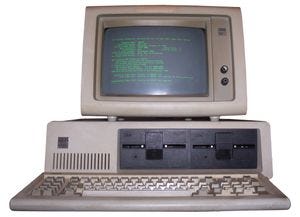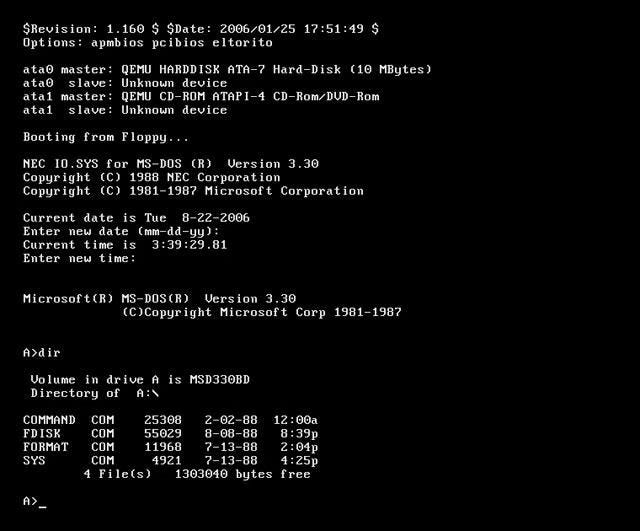After a brief trial with Apple computers, we had changed our direction and instead decided to develop software for the IBM PC & compatibles market. (At that time PCs were known as IBM PCs or IBM-compatible, this description would disappear after a couple of years, probably due to the existence of hundreds of PC producers and the slow demise of the PC division of IBM).
We had a friend still studying at the university we graduated, and he had been brought to head a PC importer company that his father had started. We talked to him and he was generous enough to offer a PC to us with a good price and also flexibility on the payment. It was a so-called "No Name" PC basically produced by assembling cheap Taiwan-produced components. We even assembled it ourselves, but we must have done a sloppy job, since a heavy jolt to the table the PC stood on would sometimes make it reboot.
The IBM PC & compatibles used the Intel 8088 processor. Microsoft developed the DOS operating system by taking over an early version and licensed it to IBM to use in its own computers, renaming it to PC-DOS. Right afterwards, they developed a variant of it called MS-DOS, and marketed that to the IBM-compatible PC developers. Later on, Digital Research also produced a version of the operating system called DR-DOS.
Going back to DOS from the Lisa or Macintosh operatings system was a step back. This was a completely textual user interface, thus it could only use the keyboard (and not the mouse, at that point)
I used my previous experience in the university to develop the basics for a Project Planning system using the Critical Path Method that we would try to sell. It was a simple tool, but it did the job. I had written some clever algorithms to solve the CPM problem rather quickly on these early PCs, and the user interface was not so bad (It was obviously textual. IBM PCs would have to wait until Windows 3.1 was released, to have something remotely resembling the Macintosh user interface). It was developed with Turbo Pascal, the newly emerging Pascal compiler for the PCs. Turbo Pascal was marketed by Borland, which was founded by the notorious Philippe Kahn. Borland also produced tools like SideKick, which was a terminate-and-stay-resident software component (the only way to run more than one program under the DOS operating system)
Turbo Pascal had a good interface and also contained a nice debugger that helped put breakpoints and follow up the code.
We tried to market the software to construction companies who would use it for their construction plans, and ended up paying a lot of money for Planning Software. This was obviously before Microsoft Project was released. Some of the larger construction companies which were involved in overseas construction projects in places like Libya and Saudi Arabia were using very professional products like Artemis and Primavera. (I was surprised to see that these products are still available today) These were obviously very expensive, so our target was smaller construction companies who could not afford these and maybe could prefer a local software localized in the language and customized according to local needs. However, although these companies were interested in the software and were impressed by its simplicity, they asked whether we had accounting software. Computer use in the country was just flourishing and these companies, having a limited automation budget, preferred to automate their Accounting System and maybe save a lot of money by controlling their expenses and also reducing the amount of money they had to pay to accounting firms. We heard this comment over and over from many potential customers.
We had to find a better strategy. Now that our initial attempt to market a Project Planning Software had failed, we analysed the situation. We would have to go into the Accounting and Financial Software market, although none of us really enjoyed working in this area. I had had a course in Accounting and was familiar with the requirements, but it still did not seem like a cool area to work in.
In the meantime we built some custom-made software for a Medical Laboratory. It was basically a Patient Management system which recorded the patients, which had a list of standard tests to be applied to the patient and let the user select these tests. It enabled the calculation of the bill and printed the bill, as well as printing the test results when they were available. It had some limited capability for printing graphical results for some of the tests. Developed over a period of more than one year and extensively tested both offline and in action, it brought us some well-deserved income and also let us continue our quest to become an important software comany despite initial setbacks.
This was only a temporary solution, and we felt we had to quickly go into the Financial Software market.




